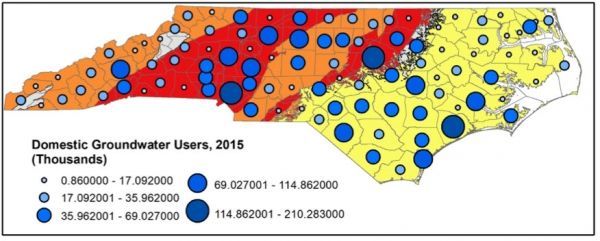“Though often thought of as a byproduct of industrial contamination, hexavalent chromium can form naturally in groundwaters, depending on the local aquifer geology and water chemistry,” said Avner Vengosh, professor of Earth and Ocean Sciences in the Nicholas School of the Environment at Duke.
Other studies have identified naturally occurring hexavalent chromium in groundwater in Arizona, California, Argentina, Brazil, Greece, Italy, and Mexico.
Only a single North Carolina well in the study violated the maximum contaminant level for total chromium set by the U.S. Environmental Protection Agency of 100 micrograms per liter. But the NC Department of Health and Human Service’s much lower health advisory level – 0.07 micrograms per liter – is set to protect against a one-in-one-million risk of cancer over a 70-year life span. That level of hexavalent chromium was exceeded by 470 of the 865 wells for which the contaminant was measured.
“There is a huge gap between 100 and 0.07 micrograms per liter,” said Rachel Coyte, a doctoral student in Vengosh’s lab who was lead author on the study. “If you follow the EPA guidance, we have no problem. But if you look at the NC health recommendations, there is a significant population exposed to hexavalent chromium concentrations at or exceeding a one-in-one-million lifetime risk of cancer. Why is this gap not being addressed?”
Continue reading at Duke University
Image via Duke University


